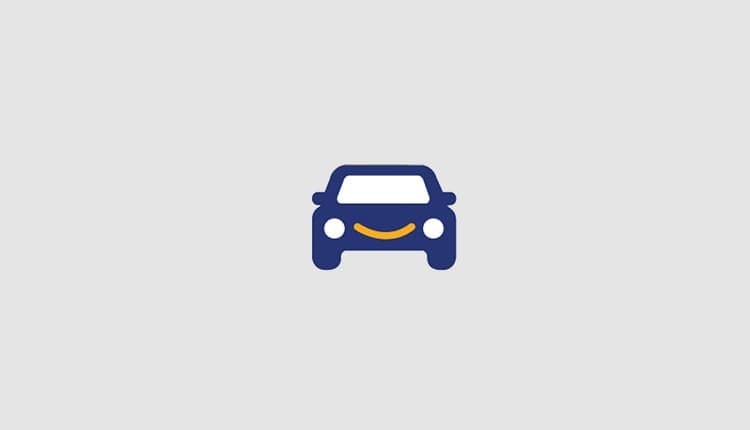

Auto Theft Coverage: What to Do After Your Car Is Stolen
To get car theft covered, you’ll need comprehensive coverage.
Compare quotes from top providers

The movie “Dude, Where’s My Car?” might be a comedy, but auto theft is no joke. Surprisingly, the minimum auto insurance in each state doesn’t cover auto theft. Rather, auto theft is only covered if you have supplemental comprehensive coverage. In this article, we’ll help you find out if your car insurance covers theft, and what to do if your car is stolen.
Auto Theft Coverage

Not all car insurance covers auto burglary/theft.
Does Car Insurance Cover Theft?
Does car insurance cover theft? Yes, if you have comprehensive coverage. However, the minimum coverage for every state in the U.S. doesn’t require this type of coverage, which also covers incidents like fires, floods, and falling rocks.
To get these events covered, you’ll need to sign up for comprehensive coverage. Comprehensive coverage also includes:
- Stolen cars. Your insurance provider will cover a stolen car.
- Stolen car parts. Your insurance provider will cover the costs if someone steals your vehicle parts, including tire and catalytic converter theft.
- Damage from break-ins.
However, comprehensive coverage does not cover:
- Personal property stolen. If you had a laptop or other personal items stolen from your car, comprehensive coverage won’t reimburse you. Rather, your homeowners or renters personal property coverage, if you have it, will reimburse you under “off-premises coverage,” up to a certain percentage.
- Theft of vehicle upgrades. Comprehensive coverage only applies to permanent, pre-installed car parts. If you added on aftermarket products, custom parts, or modifications, comprehensive coverage won’t reimburse you for the costs.
NOTE
To get vehicle upgrades covered, you’ll need custom parts and equipment coverage.
Insurance Reimbursement for Stolen Car Claims
To get reimbursed for a stolen car or car parts, you’ll need to file a claim with your insurance provider. This is what happens once you file the claim, assuming you have comprehensive coverage:
- The insurance company will investigate the theft.
- Once the investigation is complete, if the claim is covered, you’ll be reimbursed for your losses up to the comprehensive limit in your auto insurance policy.
- If your claim isn’t covered, you’ll have to pay out of pocket for your lost vehicle or vehicle parts.
FYI
Usually, auto theft claims take 14 to 30 days to be processed.
Does Car Insurance Cover Vandalism?
Like auto theft, car insurance only covers vandalism if you have comprehensive coverage. Learn more about vandalism coverage.
Gap Insurance and Auto Theft
If you have comprehensive coverage and your vehicle is stolen, then you’ll get reimbursed for the current cost of the vehicle, whether it’s a leased vehicle or a vehicle purchased with an auto loan. However, the value of a car depreciates as soon as you drive away from the dealership, so you may receive less than you paid for the car originally. That’s where gap insurance comes in.
Gap insurance will reimburse you for the difference between what you paid for your car originally and your insurance settlement. Your insurance settlement will pay your car’s actual cash value (ACV), meaning its current worth. Gap insurance ensures that you won’t lose money, even if your car is stolen.
What Is Actual Cash Value?
Let’s talk more about ACV, actual cash value. ACV is what your car is worth today, taking depreciation into account. In other words, if you sold your car today, the amount you’d get for it is your ACV.
Now, if you get your stolen car back and the damages are worth more than a certain percentage of the ACV, your insurance company will declare it a “total loss,” so you’ll be reimbursed for the entire ACV (minus your comprehensive insurance deductible). This threshold differs by state and insurer, so ask your insurance agent about the threshold for totaling a car.
How Much Is My Car Worth?
Many people wonder how insurance companies value cars and determine the ACV. How can you know that you’re getting reimbursed fairly for your ACV? Here’s how to determine your car’s worth:
- Consult the Kelley Blue Book.
Consult the National Automobile Dealers Association’s NADAguides.
How to Prevent Car Theft
Even if you have comprehensive coverage, you’ll still have to pay a deductible before your insurance kicks in up to your coverage limit. To avoid paying a dollar above your premiums, your best bet is to prevent car theft in the first place. Here are our tips for preventing car theft:
- Always lock your car when you leave it, and make sure all the windows are up and locked.
- Park in areas with a lot of people around, with good lighting and visibility. Make sure things like dumpsters and trucks aren’t blocking the view of your car.
- If you are parked at home, park in a locked garage or in a driveway with a locked gate.
- Install motion-activated lights around your home.
- If you see anyone loitering, avoid parking in that area.
- Use anti-theft devices such as these:
- Steering wheel lock
- Gearshift column lock
- Vehicle recovery systems with GPS tracking1
- Horn alarm
- Computer chip in the ignition key that disables the flow of electricity and fuel to the engine2
Passive vs. Active Anti-Theft Systems
When it comes to protecting your vehicle from theft—and potentially lowering your insurance premium—understanding the difference between passive and active anti-theft systems is key.
Passive anti-theft systems automatically engage when you turn off the vehicle and remove the key. These systems don’t require any extra steps from the driver and are always “on” by default. Examples include engine immobilizers, which prevent the car from starting without the correct key, and automatic door locks that activate when the car is turned off.
Active anti-theft systems, on the other hand, require the driver to take action to arm them. This could mean pressing a button on a remote key fob to lock the doors and activate an alarm or manually setting a steering wheel lock. Because these systems rely on the driver’s input, there’s a risk they might not be activated if forgotten.
From an insurance standpoint, both systems can help reduce the risk of theft and may qualify you for a discount. However, passive systems are often viewed as more reliable since they’re always engaged, which can offer greater peace of mind—and potentially a better break on your premiums.
What to Do if Your Car Is Stolen

Even the most stringent licensed driver could still fall victim to auto theft. Take these steps if your car is stolen:
- Make sure that it was actually stolen and not towed, repossessed, impounded, or claimed.
- Once you confirm that you were a victim of vehicle theft, call the police and file a police report.
- If your car has a tracking device, try to recover it yourself.
- Contact your insurance provider and file a claim, if you have comprehensive coverage. If not, you’ll have to pay out of pocket for a new car. Here is the claims contact information for each auto insurance provider:
- Wait for the reimbursement check to come in, which could take anywhere from 14 to 30 days.
What to Do if Your Car Is Recovered
Congratulations, your car is yours again! Here’s what to do if you find your stolen car:
- Tell your insurance agent immediately.
- If it has any damages, file claims for them so your provider can cover the repair costs. 5
Anti-Theft Discounts
Recap
No one ever wants to deal with auto theft and burglary, but if you have comprehensive coverage, you won’t have to pay out of pocket for repairs or replacements, excluding your deductible. Check out our auto insurance shopping guide for help picking a full coverage insurer.
FAQ
Learn even more about auto theft coverage below; we’ve answered the questions you asked the most often.
What auto coverage covers theft?
Comprehensive auto insurance coverage covers theft. Theft is not covered by property damage coverage, collision coverage, or bodily injury coverage.
- Bodily injury liability
- Property damage liability
- Comprehensive coverage
- Collision coverage
- Medical payments coverage / personal injury protection
- Uninsured/underinsured motorist coverage
What does auto theft insurance include?
What auto theft insurance includes depends on your state’s minimum coverage requirements and the supplemental coverage you’ve added on, but in general, full-coverage auto insurance includes these coverages:
Does full-coverage auto insurance include theft?
Yes, full-coverage auto insurance includes theft under comprehensive coverage. However, it only includes theft of the original car or car parts, not any add-ons, modifications, customizations, or personal belongings stolen from your car.
Does GEICO cover items stolen from cars?
GEICO only covers items stolen from cars as part of its homeowners/renters insurance policies under its personal property and off-premises coverages.
Citations
Does car insurance cover theft and vandalism?. Nationwide. (2022).
https://www.nationwide.com/lc/resources/auto-insurance/articles/does-car-insurance-cover-theftVEHICLE SECURITY AND RELATED TIPS. sandiego.gov. (2017, Sept 29).
https://www.sandiego.gov/sites/default/files/vehiclesecurity_1.pdfDoes Car Insurance Cover Theft? Allstate. (2019, Nov).
https://www.allstate.com/tr/car-insurance/protect-against-vehicle-theft.aspxVehicle Theft Prevention. United States Department of Transportation.
https://www.nhtsa.gov/road-safety/vehicle-theft-preventionDoes car insurance cover theft?. Progressive. (2021).
https://www.progressive.com/answers/does-car-insurance-cover-theft/

